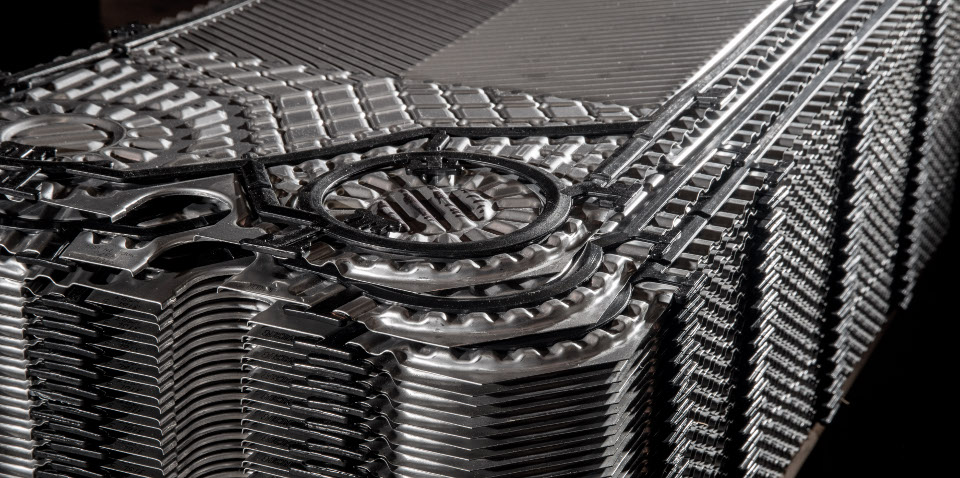Plate Heat Exchanger Advantages
Easy to Remove and Clean
You simply remove the tie bolts and slide back the movable frame. The plate pack can then be inspected, pressure cleaned, or removed for refurbishment if necessary.
Expandable
A significant benefit of the plate heat exchanger is that it is expandable, allowing an increase in heat transfer capability. As your heat transfer requirements change, you can simply add plates instead of buying an entire new frame unit, saving time and money.
High Efficiency
The pressed plate patterns and narrow gaps allow for very high turbulence at relatively low fluid velocity. Combined with counter directional flow results in very high heat transfer coefficients.
Compact Size The high efficiency requires less heat transfer area resulting in a much smaller heat exchanger than would be necessary for the identical effectiveness of other heat exchanger types. Typically a plate heat exchanger requires 20-40% less space than required by a shell & tube heat exchanger.
Close Approach Temperature
The same features that give the plate heat exchanger its high efficiency also makes it possible to reach close approach temperatures which is particularly important in heat recovery and regeneration applications. Approach temperatures of 1ºF are possible.
The plate heat exchanger can be built in sections, separated with simple divider plates or more complicated divider frames with additional connections. This makes it possible to heat, regenerate, and cool a fluid in one heat exchanger or heat or cool multiple fluids with the same cooling or heating source.
Avoid cross contamination
Each medium is individually gasketed and as the space between the gaskets is vented to the atmosphere, cross contamination of fluids is eliminated.
Less Fouling
Very high turbulence is achieved as a result of the pattern of the plates, the many contact points, and the narrow gap between the plates. This combined with the smooth plate surface reduces fouling considerably compared to other types of heat exchangers.
Lower Costs
High heat transfer coefficients mean less heat transfer area and smaller heat exchangers, and sometimes even less heat exchangers. This and less space requirements, reduced flow rates, and smaller pumps means.

Copyright 2009 – 2017 Techno Service Co. | All Rights Reserved | Powered by KaramiArt
